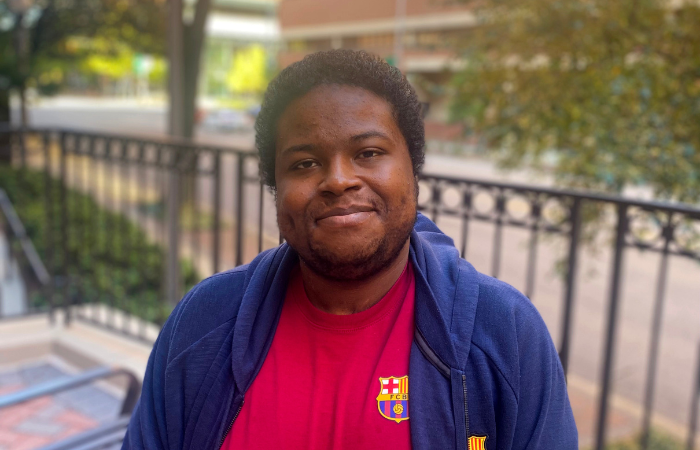
“I started taking cough drops for a minor sore throat,” he says. “Then one day, when I was doing rounds before my shift, I became weak and had shortness of breath.”
Sure enough, he tested positive for the virus. “It became harder to breathe, and I couldn’t lie in a normal position,” he recalls. “I called 911, went to the emergency room, and then was sent to the ICU.” There, he spent nearly two months in a medically induced coma and on a ventilator. “The first thing I remember after waking up is being told that I had a gastrointestinal bleed because I’d been intubated,” Malone says.
First of Many Challenges
That was just the first of many challenges he would face. Malone’s upper body was extremely weak, and he had a condition called foot drop, making it impossible to walk. “For months on end, I tried to improve my strength so that I could leave the hospital and get into inpatient rehabilitation therapy,” he says. “It took a month to get to the point where I could use a walker.”
By the end of November 2021, Malone had suffered two additional gastrointestinal bleeds, life-threatening sepsis, a bed sore that wouldn’t heal, and COVID cholangiopathy, which is an uncommon but serious injury to the bile ducts of the liver. Malone’s surgeon and UAB Comprehensive Transplant Institute Director Jayme Locke, MD, MPH, took a conservative approach to managing Malone’s liver issues. “The liver is a unique organ in that it has the ability to recover from an acute injury,” she says. “For example, when someone donates part of their liver for transplantation, it can grow back within three weeks.”
Dr. Locke and her team gave Malone’s liver time to heal itself but ultimately determined that the damage was permanent. “There’s a tipping point when the liver loses its ability to recover, and only time gives you that information,” Dr. Locke says. “And as his liver failed, it made his kidney function worse.”
No Guarantee of Transplant
Even as he experienced liver and kidney failure, Malone wasn’t guaranteed a transplant. Because the number of organs available for transplant is limited, multiple factors must be considered when placing candidates on the waitlist. “Malone’s functional status wasn’t great, so we were concerned about his ability to recover from surgery,” Dr. Locke says. “But he’s a young man and a health care provider who risked his life taking care of patients with COVID, so we had to swing for the fences.”
Once the decision was made, Malone was on the transplant waitlist for only a week. On a scale ranging from 6 to 40, Malone’s Model for End-State Liver Disease (MELD) score was 40, putting him at the top of his blood group for a donor organ. He underwent liver and kidney transplant surgery in mid-December 2021 – one year and five months after receiving his positive COVID-19 test result.
Family Support and a Hopeful Future
Malone attributes much of his success to the support of his family and friends. “My mother, father, and sister took care of me, and my UAB coworkers from different departments checked up on me and helped me,” he says.
“Transplantation is a lot to process at his young age,” Dr. Locke says. “Patients are active participants in moving forward with transplant, and support from family is critical. Malone is very fortunate in that regard.”
Within a week of surgery, Malone felt like a new person. “By early December, I felt like I was fading away,” he says. “Anytime I closed my eyes, I felt like I could pass on.” Today he feels that he’s been given a second chance at life. “It sounds cliché, but it is truly a gift.”
Malone continues to recover both from lingering COVID complications and from his liver and kidney transplant. “It’s a slow process, with weekly labs and regular appointments,” he says. “My main goal is to get well enough to work in my old job again.”
